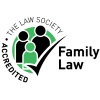A recent case of Haines v Hill and Another (2007) EWCA Civ1284 has created quite a flurry of interest recently.
It had previously been held in this case that the transfer of the family home from one spouse to another was a transaction at an undervalue under section 339 of the Insolvency Act even if the transfer had taken place in accordance with a property adjustment order made in divorce proceedings. However, the court of appeal has now overturned that decision making it harder for a transfer of the family home in divorce proceedings to be set aside pursuant to section 339 of the Insolvency Act 1986 and thereby resolving matters in favour of the family.
In the case of Haines v Hill, Mr & Mrs Haines were married and jointly owned a house. Mrs Haines started divorce and financial proceedings in 2003. An order was made within these proceedings in December 2004 that Mr Haines should transfer the house to Mrs Haines. This is known as a property adjustment order. Mr Haines was not to receive any money in exchange for this transfer. Mr Haines did not sign the transfer document and applied for his own bankruptcy and was made bankrupt on 31st March 2005.
In September 2005 a judge signed the transfer of the property on Mr Haines' behalf as he had failed to do so. The house was then sold.
As Mr Haines had been declared bankrupt a representative was appointed to take over his financial affairs, collect in his assets and make payments to his creditors. The representative is known as a Trustee in Bankruptcy ("Trustee").
Section 339 of the Insolvency Act 1986 allow's transactions that were entered in to at an "undervalue" to be set aside if the person transferring the asset is later declared bankrupt. A transaction at an undervalue occurs where an asset which has a capital value is sold or transferred but the owning party does not receive a payment of money or other consideration, equal to or roughly equal to the value of the asset.
If the transaction is overturned under the Insolvency Act, the asset is returned to the trustee and can be used to pay the debts of the bankrupt.
As the house in this case was transferred to Mrs Haines with no payment being made to Mr Haines and as the transfer took place within the time limit, namely not more than 5 years before the bankruptcy, the trustee applied for the transfer of the house to be undone (set aside). Then Mr Haines' 50% of the house proceeds would be paid to the Trustee. This would have left Mrs Haines homeless.
The trustee's initial application to the court failed and so the trustee appealed. The appeal was successful with the court finding that there was a transaction at an undervalue. Mrs Haines then appealed to the Court of Appeal.
The essential issue was whether or not Mrs Haines had given consideration in money or money's worth for the transfer of the property into her sole name. She argued that by giving up claims to other financial orders in the divorce she had given good consideration.
The Court of Appeal judgment stated that in the divorce court the orders that are made as to the family assets are normally orders based on a quantification of the family assets by reference to information given to it by the husband and wife. Therefore the family court has already made an order based on what it believes to be fair and balanced and it should follow that "good consideration" has therefore been given by both parties. Any order made in divorce proceedings should therefore not automatically be capable of being set aside. The Court of Appeal went on to say that it could not accept that Parliament intended that one of the commonest orders in divorce proceedings, that a house be transferred to another spouse, could be capable of automatic nullification if the transferring spouse was later made bankrupt. Accordingly Mrs Haines was successful in her appeal and the Trustee's application that the transfer of the property was at an undervalue was dismissed. This allowed Mrs Haines to retain all of the proceeds of the sale.
The Court of Appeal did clarify however that every case is obviously different and if for example a Trustee can show that the information provided within the divorce proceedings in relation to assets was inaccurate or based on a mistake, which would have meant that any property adjustment order may not have been made within the divorce proceedings, then the Trustee may still be entitled to make a claim under Section 339 of the Insolvency Act 1986. Further a Trustee, as will a Court, will be very alive to the possibility of a "sham" divorce simply to try and get assets transferred to one spouse before a bankruptcy order is made and this will very probably fail.
This decision will mean that it will now make it difficult for Trustees in Bankruptcy to overturn orders made in divorce proceedings. Although as indicated the Court of Appeal did not close the possibility that a Trustee can still bring a claim under S339 where the divorce settlement arises purely to frustrate a bankrupt's creditors or where full and frank disclosure of assets and liabilities has not been given in the financial proceedings, in an ordinary divorce case the divorce settlement is now likely to prevail.
There is the possibility of the Trustee appealing this decision to the House of Lords but we will have to wait and see. In the meantime the plethora of cases that have been brought by Trustees following the first appeal have currently been stopped in their tracks.
For further information on this or any other family related issue please contact Jane Flemming or Karen Moores on 08701 417 154. If you would like some more information on Debt issues and Insolvency please contact Leanne Schneider-Rose on 08701 417 154.
 |
 |
 |
 |
 |
 |
|




